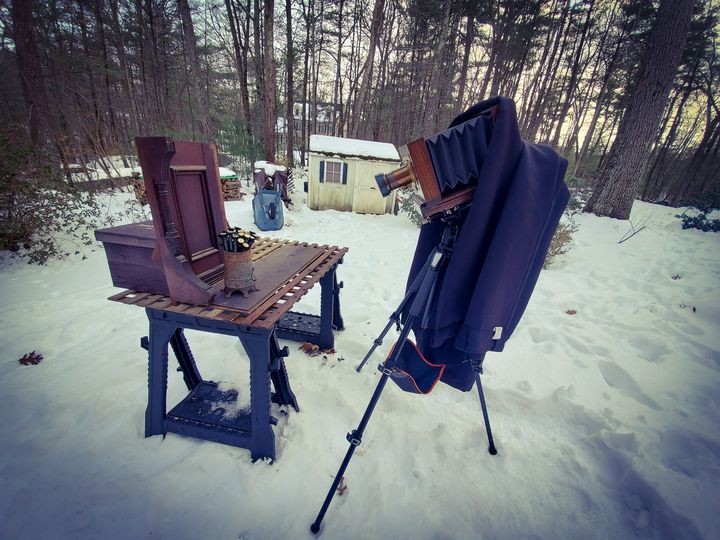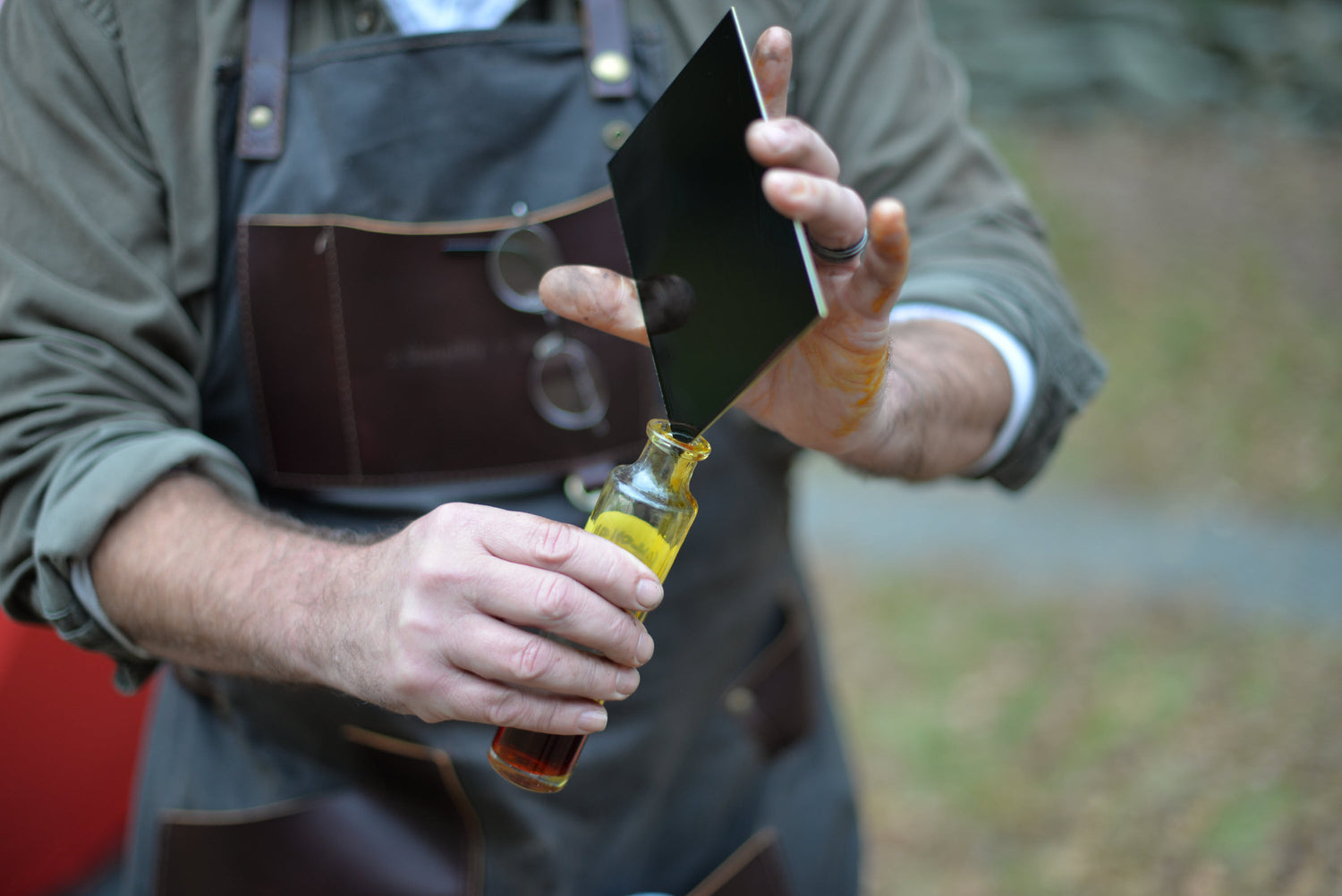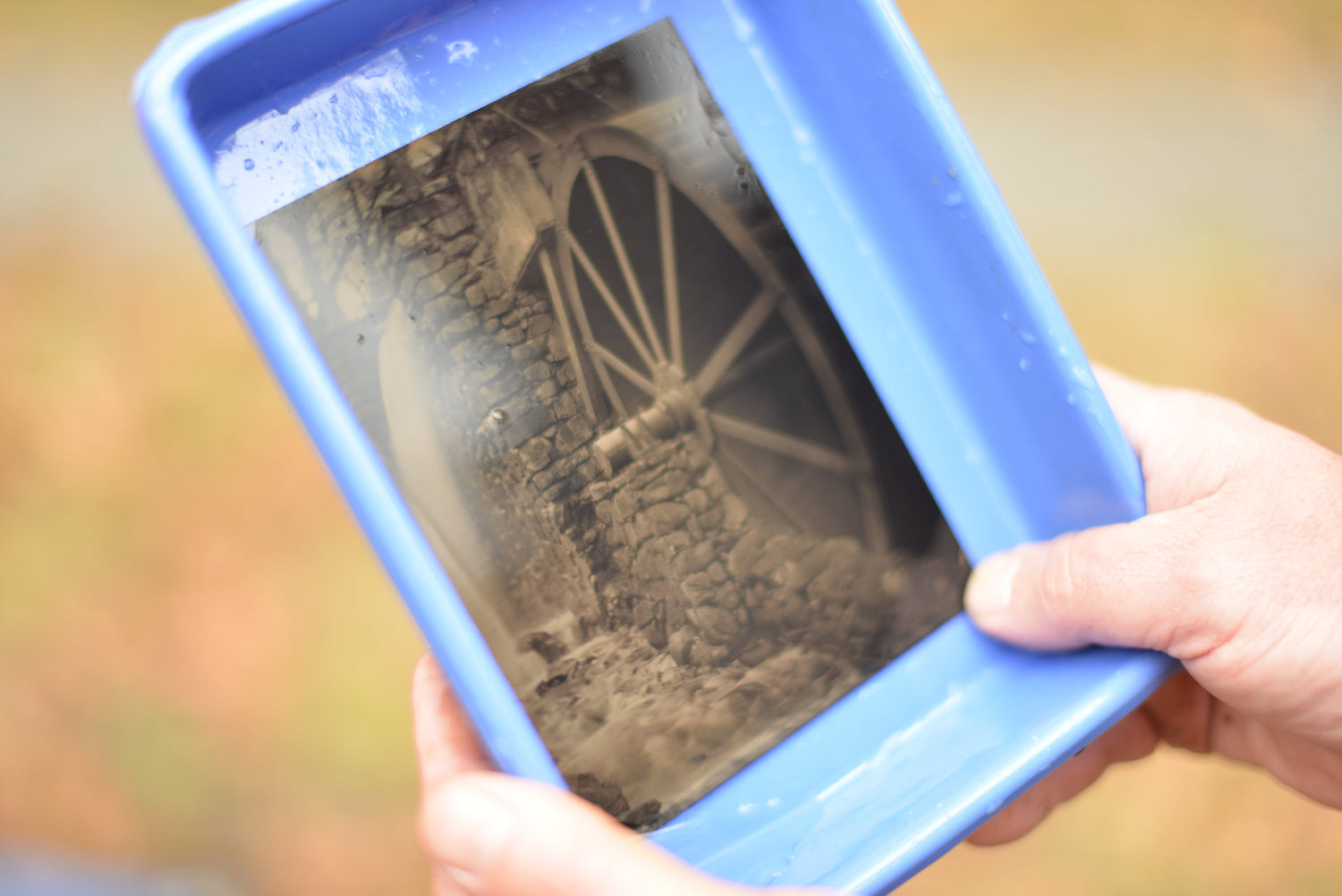View
-
Landscapes & Other Subjects
-
Behind the Lens

Wet Plate What?
Wet plate collodion is one of the earliest of photography methods that was introduced in 1851 by Fredrick Scott Archer. At its core - it is a complete end-to-end processing and development of a photographic "plate" before the chemicals dry (usually about 20 minutes or less) - hence its moniker.

Lens Obsessed
Every camera lens manufactured since the beginning of the photography has a unique visual signature. Lenses have unique personality that match with specific people and scenarios better than others. I will admit that I am smitten by depth, swirl and aberration in early glass that assuredly drove my practitioning forbearers bonkers. My quest for new and unusual lenses is unending - and activates a new creative exploration with each new discovery.

Collodion & Chemistry
My grade school science teachers would likely be proud (or at least highly interested) in this creative turn of events. Each step of the wet plate process (coating, sensitizing, developing, and fixing) requires a 19th century style blend to support the procedure. Its temperamental to say the least - and slows to cooler temps, gets angry at aging, & invokes an array or unpredictable outcomes based on the subtilties of a given day .

The Joys of Unpredictability
One of the incredible beauties of this craft are the often surprising results of simple and subtle variation. The wet plate process is inherently untamed and evades post capture production. It has always felt more organic, and real. An image straight through glass to a sensitized plate and captured, unmoving and unchangeable, within moments.


